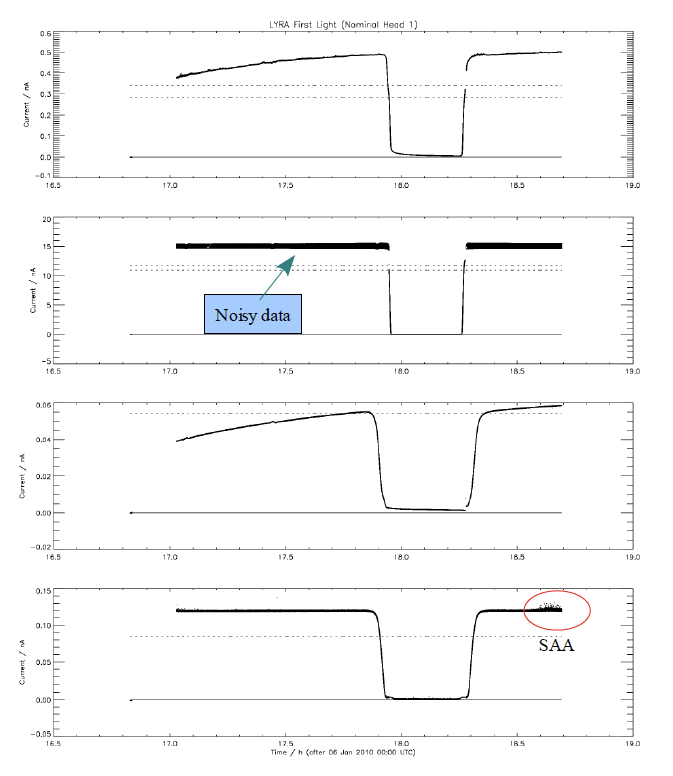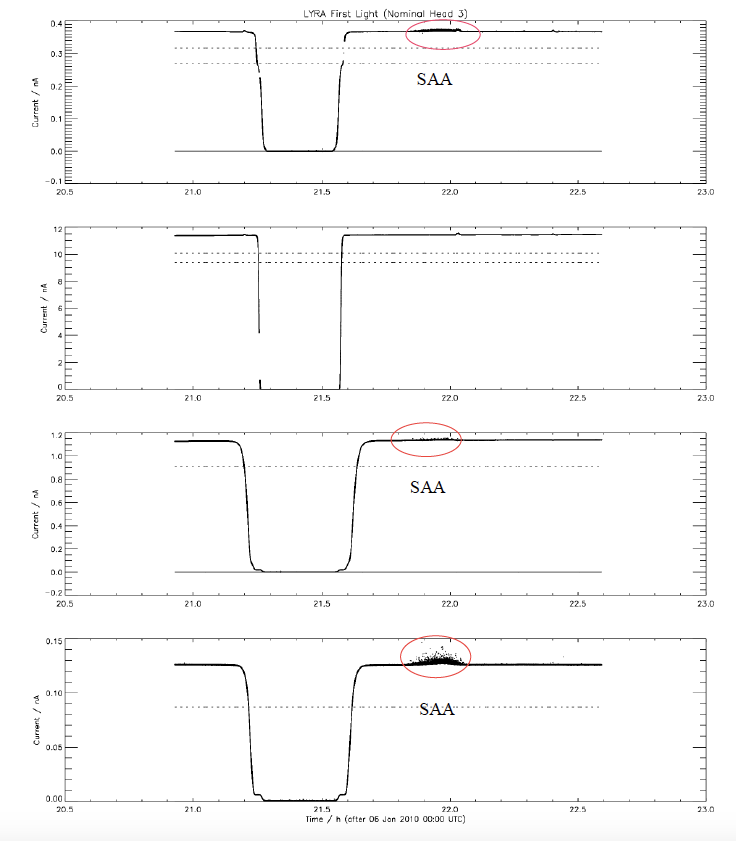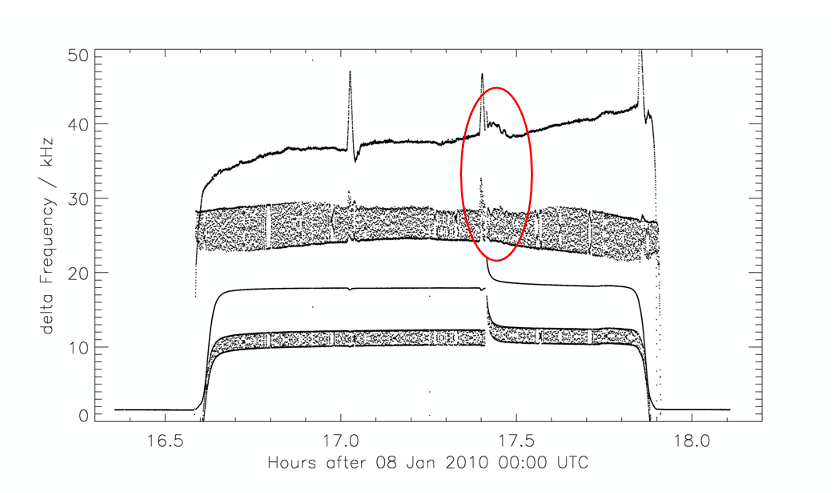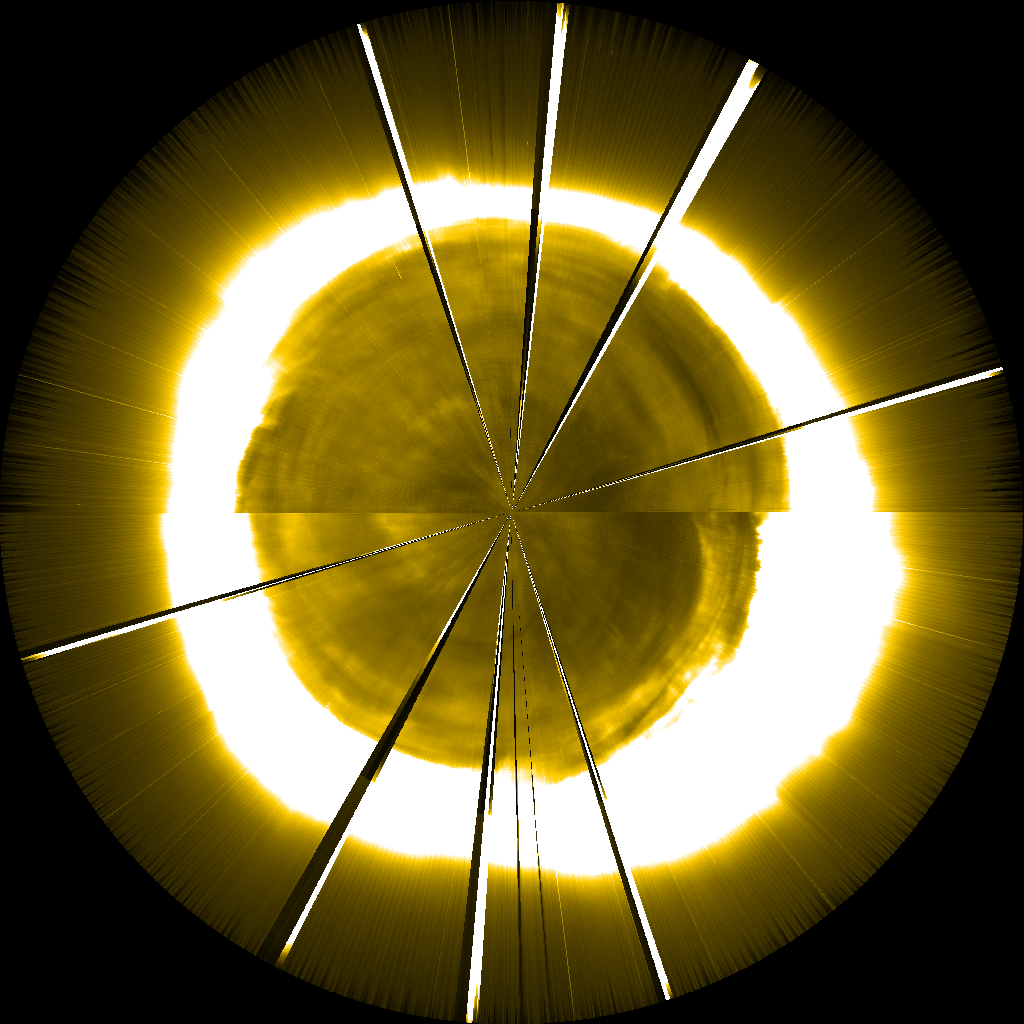Main menu
You are here
12 years of successful LYRA observations
Thu, 01/06/2022 - 00:00 — Elke D'Huys




12 years ago today, on 6 January 2010, the doors of the LYRA instrument were opened for the first time. LYRA is a radiometer that is composed of three units, which each observe in the same four channels: Lyman-alpha (120-123 nm), Herzberg (190-222 nm), Aluminium (17-80 nm) and Zirconium (6-20 nm). On the day of the first light, all three units were opened, and the first LYRA observations made then are shown in Figure 1.



Figure 1: First Light observations by LYRA taken with Unit 1 (left), Unit 2 (middle) and Unit 3 (right).
These observations immediately trained the LYRA scientists to cope with the different artefacts that we can find in LYRA data (which can easily be filtered out of the scientific data). The measurements in Figure 1 show perturbations in the data due to electronic noise, to Large-Angle Rotations (where the PROBA2 satellite turns by 90 degrees to ensure its star trackers have an unobstructed view of the star field), and due to the South Atlantic Anomaly (when the satellite crosses this region it is exposed to increased radiation). There are also time periods where the measured signal falls to (almost) zero. These are periods of occultations, which occur roughly from October to February. During such an occultation, the Earth is between the satellite and the sun and LYRA is observing through the Earth’s atmosphere (which absorbs UV light), causing the LYRA signal to dip for a few minutes.
These first LYRA observations were taken during a deep solar minimum, so the Sun was not very active at this time. Nevertheless, a few A and B-class flares happened on that day. In fact, the strongest of these flares (a B5.5 flare) was strong enough to be detected by the instrument and happened during the First Light acquisition with Unit 2. So we could have captured our first LYRA flare on the very first day. Unfortunately, that flare happened in the middle of the occultation and was therefore missed. The first flare observation by LYRA was made just a few of days later, on 8 January 2010 and is shown below in Figure 2. This was a tiny flare, occurring around 17:25 UT, that did not even reach the B level and was thus not reported by GOES. It was most probably related to activity on the south-west limb of the Sun. This flare was actually best observed in the chromospheric channels (Lyman-alpha and Herzberg) and was thus LYRA's first Lyman-alpha flare. Many more followed after that one!

Figure 2: First flare observation by LYRA, taken on 8 January 2010.









